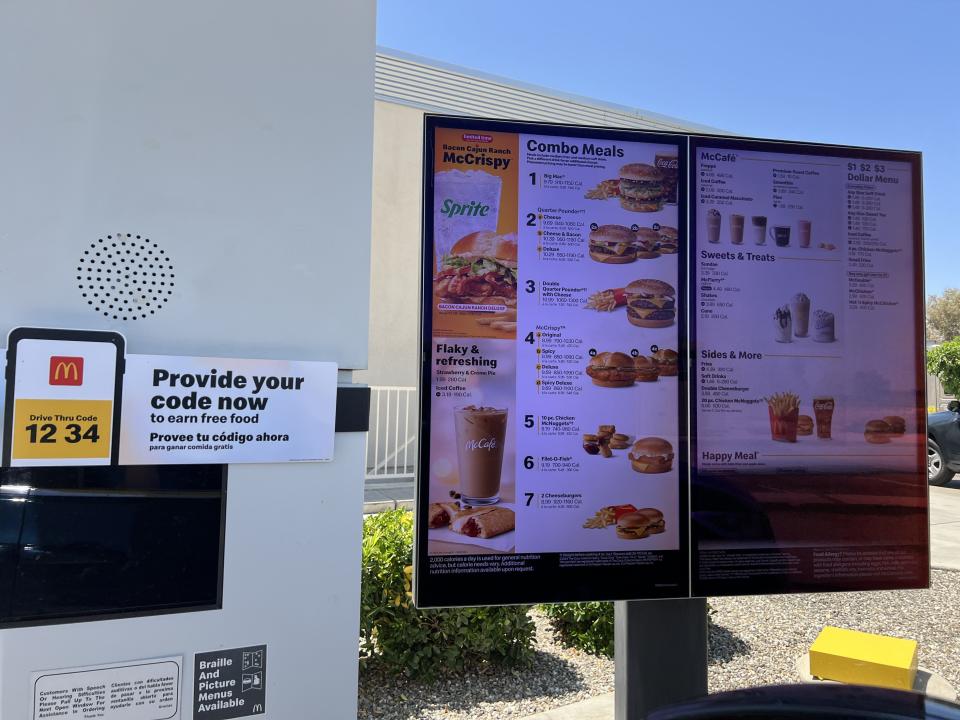On a humid April afternoon, Christine Gala picked her way through the wreckage of what used to be Trico Shrimping Company, before Hurricane Ian had its way with it.
She made her way to the western edge of the building, toward the water, wending her way around detritus left behind by the storm. Expensive shrimp processing equipment, jagged sheets of plywood and drywall, putrid stone crab, a commercial freezer door Ian sucked right off its hinges and threw on the other side of the room.
Looking through a gaping hole in the wall where a garage door once hung, Gala pursed her lips at what used to be the largest commercial dock so close to the prodigious Gulf shrimp fishing grounds off Key West. It was 400 feet long, and up to 30 boats of the “pink gold” fleet tied up there.
“We had just replaced this dock,” she said. “Cost us $300,000.
“This is what they’re tied up to right now,” she says, gesturing at a couple of shrimping boats that used to belong to Trico. “Just pilings.”
When Ian roared into Southwest Florida, the storm hit Fort Myers Beach and San Carlos Island, where Trico was headquartered, all but head-on. Ian’s massive storm surge threw steel-hulled ships around like toys, ripped pilings out of the water and smashed through the roof and walls of the historic building, originally a parachute-packing plant in World War II.
Nearly two years later, the 400-foot dock and building Trico rented from Lee County remain in disrepair. Another 200-foot dock Trico owned is being sold to the Fort Myers Beach fire district, which plans to run its boats out of it, effectively cutting working waterfront space down to that of fellow shrimper Erickson & Jensen until the Lee County dock is repaired. Gala expects the 200-foot dock sale will be finalized in June.
The county plans to demolish and rebuild the building and dock, also known as San Carlos Maritime Park –– but in April, county commissioners officials ordered staff to explore repurposing the dock for activities other than strictly commercial fishing. Shrimpers, their lawyers, and locals invested in their island’s history turned out to plead with the county to retain the space as a working waterfront, but the future is uncertain.
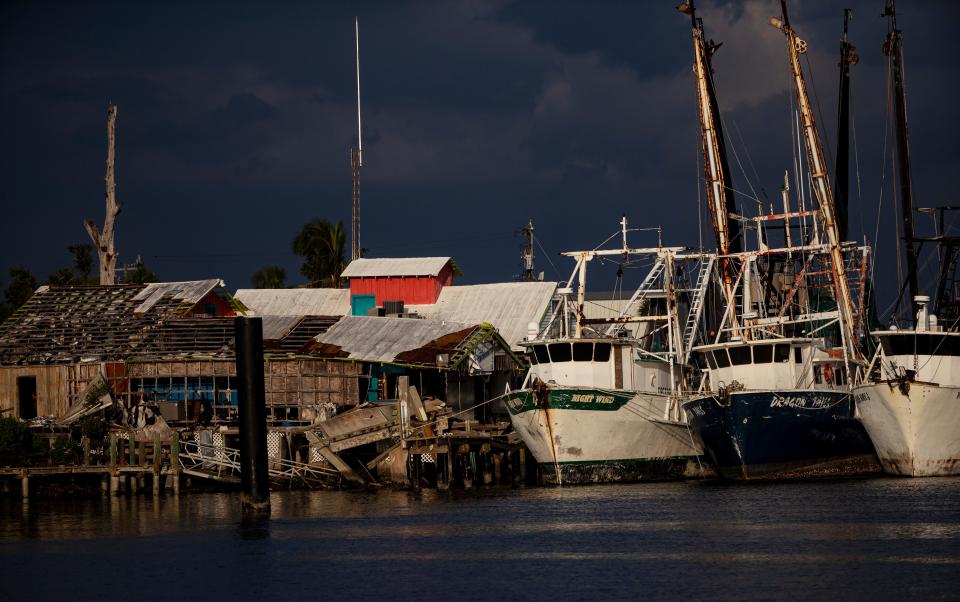
What happens with that dock could be a vital part of keeping the “pink gold” fleet on the water, and shrimping going in Florida, experts say –– or it could be yet another hurdle for an industry already struggling.
That even more working waterfront space may go away worries shrimpers and industry experts around the Gulf, who have seen their industry shrink massively over the last three decades under high fuel costs, dirt-cheap imported shrimp, and the real estate industry gulping up valuable waterfront space, among other pressures.
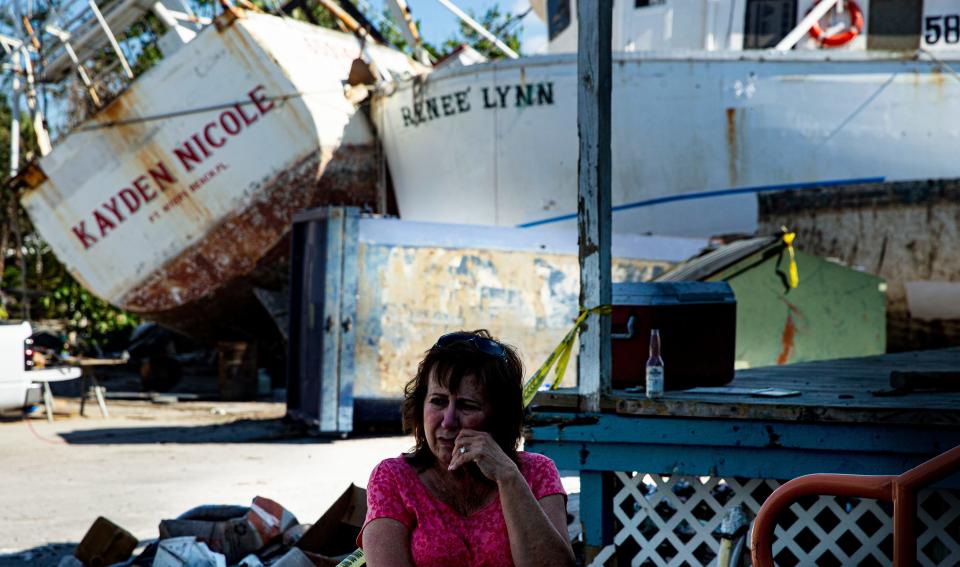
“If we continue to keep killing this industry we’re going to lose a domestic food source,” said Texas Sea Grant program director of sustainable fisheries and aquaculture Laura Picariello. Picariello routinely works with shrimpers around the Gulf.
“That’s where the shrimp industry sits: on the verge of collapse,” she said of Gulf shrimpers. “It is just one more cut, but it could be terrible.”
Once known as the Murphy Oil property, which the county purchased in 1991 for just over $1.6 million, Trico has had a lease on the renamed San Carlos Maritime Park since sometime around 1993 – Gala can’t quite recall. The park boasts a boat ramp, dock, building and a 12-space parking lot. Within a dozen hours of the prolific Key West fishing grounds, it has long been a popular docking spot for shrimpers from all around the Gulf, from Florida to Texas.
Trico, however, went into receivership the year following Ian when tensions between owners spilled over into court.
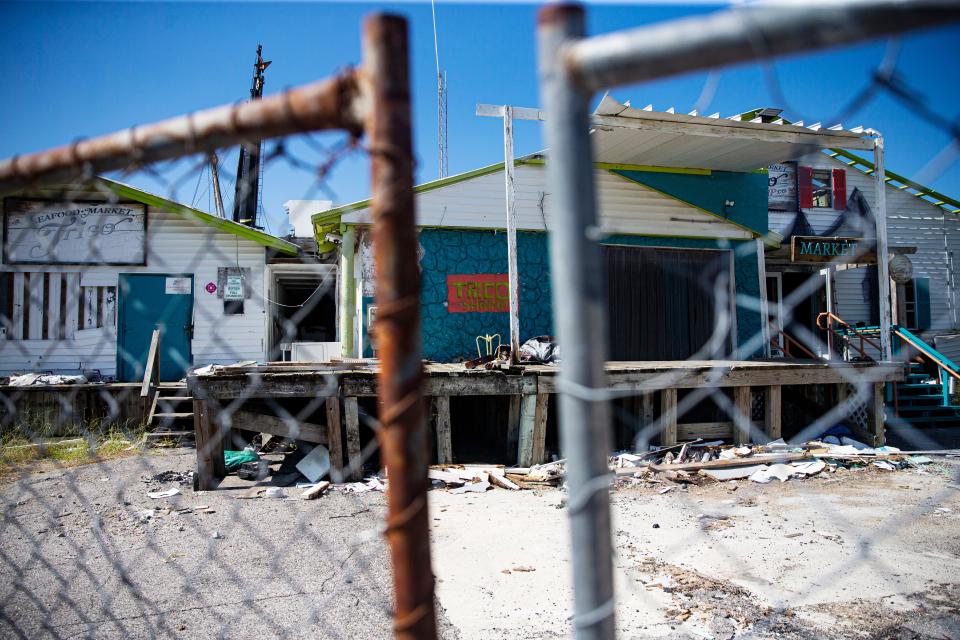
The business still holds the property lease through 2034, according to lease documents Gala provided to The News-Press/Naples Daily News, but like everything else the company once owned, its lease is set to be liquidated by the receiver and Fort Myers Beach-based attorney Mike Kayusa, per judge’s order. Too, Lee County has told Gala that Trico is in violation of its lease, as it hasn’t repaired the dock or building since the storm, Gala said.
A condition of its $1,500-a-month-lease was that Trico “repair and maintain the Lease Property in a good and safe condition at its cost and expense,” the contract reads.
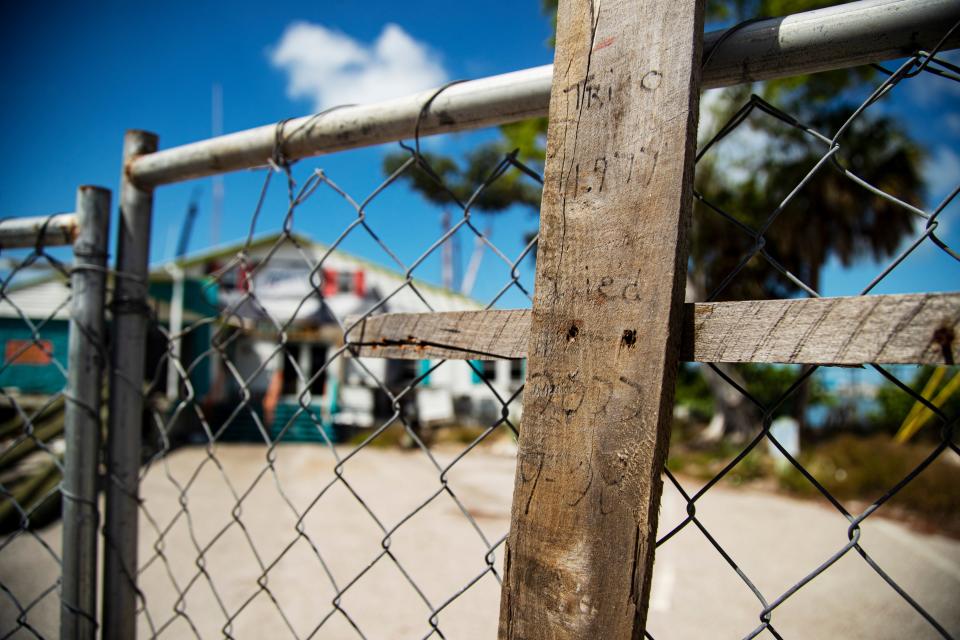
Since the receivership went into effect, they haven’t.
As such, the county is trying to decide what the future holds for the dock.
While FEMA rejected an application to fund it, Tuesday, Gov. Ron DeSantis awarded the county $7.5 million through the Job Growth Grant Fund for redesigning and rebuilding the entire park, including dock, with one catch –– it splits the use of the dock between emergency management / disaster response and shrimpers. The grant will provide enough funds to build a bulkhead, allow for barge operations, port improvements, loading docks and mooring points, DeSantis said.
“Obviously it’s an important part of the economy,” DeSantis said. “If it’s needed for disaster response, it’s going to be able to serve that function as well.”
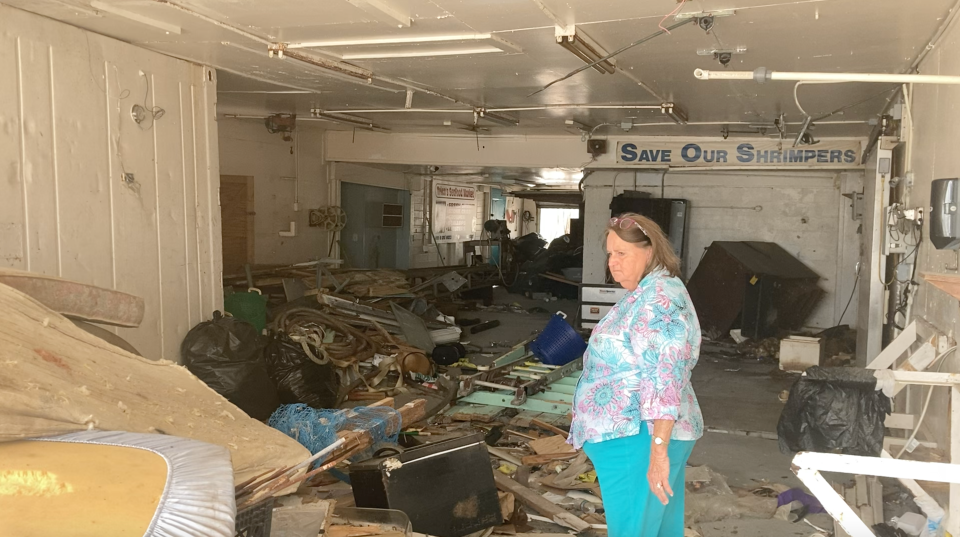
In an April meeting, county staff first floated the split as the commissioners searched for revenue streams that could help rebuild the dock. Now, it’s a reality.
The idea is not popular with shrimpers. Dock space is at a premium, and shrimpers have taken to docking in Tampa and St. Petersburg, which can increase their journey to Key West and the amount of fuel they burn. Too, in the event of a hurricane, if emergency management takes over the maritime park, where will they dock their trawlers?
“I don’t want Hurricane Ian to rob us of our shrimping industry,” said Commissioner Brian Hamman, who urged the commissioners to ensure the dock was shrimpers-first.
Commissioner Kevin Ruane concurred.
“We’re not trying to eliminate anybody, but at the same time, we’re trying to have more purposes to this (dock),” he said.
But shrimpers are holding their breath until the dock is rebuilt.
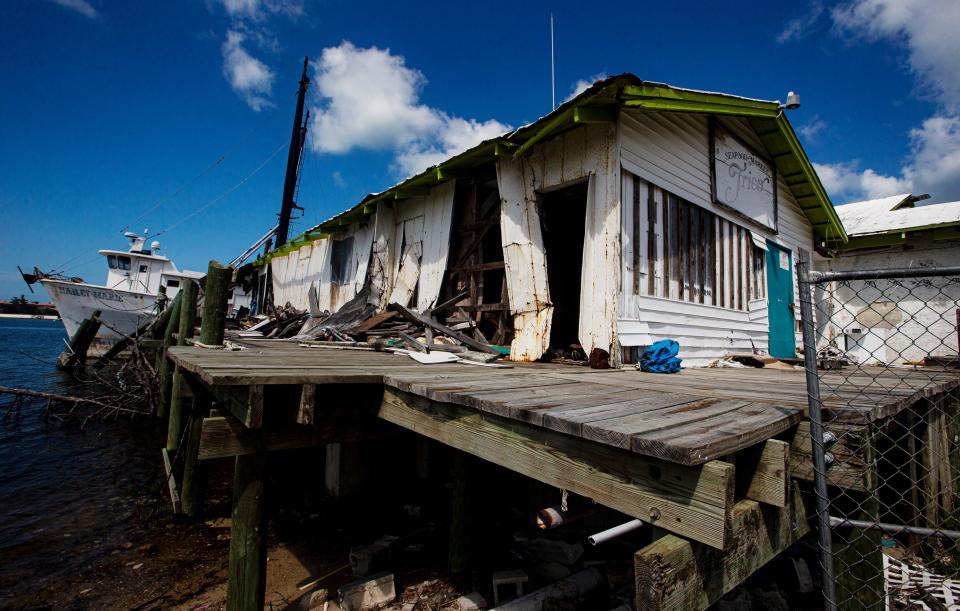
“Without the dockage, we have no shrimp boats that come into the community,” said Trico dock neighbor and Erickson & Jensen shrimping company co-owner Grant Erickson at the April county meeting. “If shrimp boats can’t park on this property, we’re not going to have a shrimp industry.”
Erickson & Jensen’s dock, which fits about a dozen boats, sits between the two docks Trico’s name used to hang above. It, too, was destroyed by Ian, but Erickson, who owns the property outright, rebuilt it to the tune of $1 million.
He hopes to take over the lease on the Lee County dock and grow his business.
It will be two to three years before the erstwhile Trico dock is back in operation, though. No matter how the usage is split between emergency management and commercial fishers, it will still have a long time before dozens of boats fill the slips again.
Once titanic, Gulf shrimping industry shrank down to a handful of companies
Ernie Aparicio has been shrimping all his life. A native of Palacios, Texas, he took a break to attend college and work at a nuclear power plant for a few years at his father’s urging, but it didn’t take.
“When you got salt in your blood, you gotta go back to the water,” Aparicio said.
Now in his early 50s, he and his brother co-own a small fleet of 10 boats, with a home berth of Palacios.
But shrimping in Texas is inefficient right now, Aparicio said. The brown shrimp so plentiful along the Gulf’s western edge take more fuel to reach, and fetch a lower price than the sweet, pink shrimp found off the Keys.
So, five of Aparicio’s ships are currently docked in St. Pete, one of the next-closest working docks to Key West.
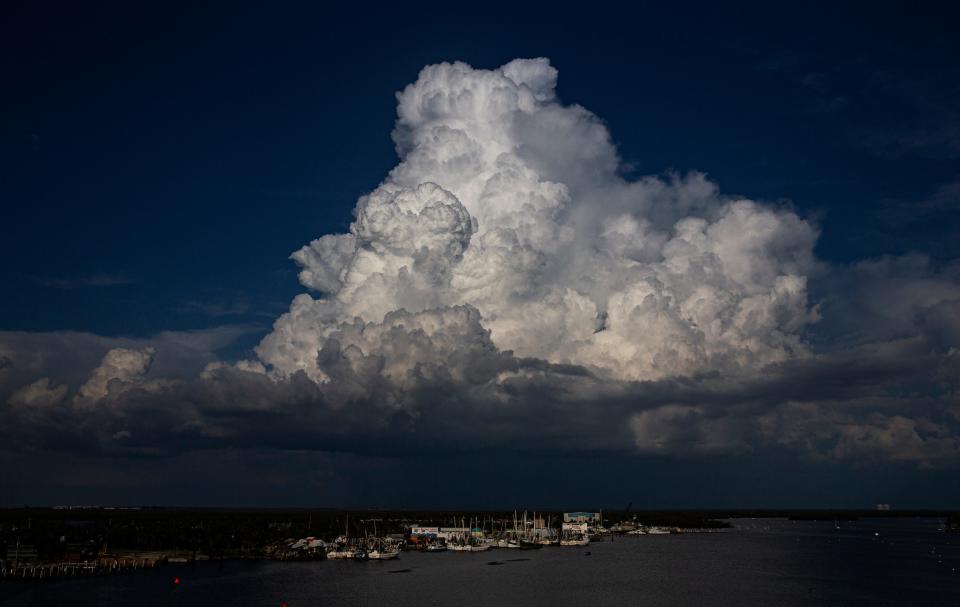
From there, it takes him about 18 hours to reach shrimp. But he sorely misses the old Trico dock. From Fort Myers Beach, it takes 12 hours to reach shrimp – or less.
“There’s good bottom there,” Aparicio said. Not only is the Matanzas Pass deep enough for shrimping vessels, but there’s shrimp available to catch right off the dock, he explained. And time is of the essence, as shrimp can only be caught at night.
To hear shrimpers tell it, the future of San Carlos Maritime Park may determine the future of shrimping in Florida, and around the Gulf.
Shrimping is a longstanding industry in Southwest Florida, bringing in more than $20 million annually in dockside landings in Lee County alone. That doesn’t account for what economists call knockoff effects, such as the purchase of gasoline to run the ships, food to sustain the crew on the water, or even the value that local crews participating in the local economy bring to the area.
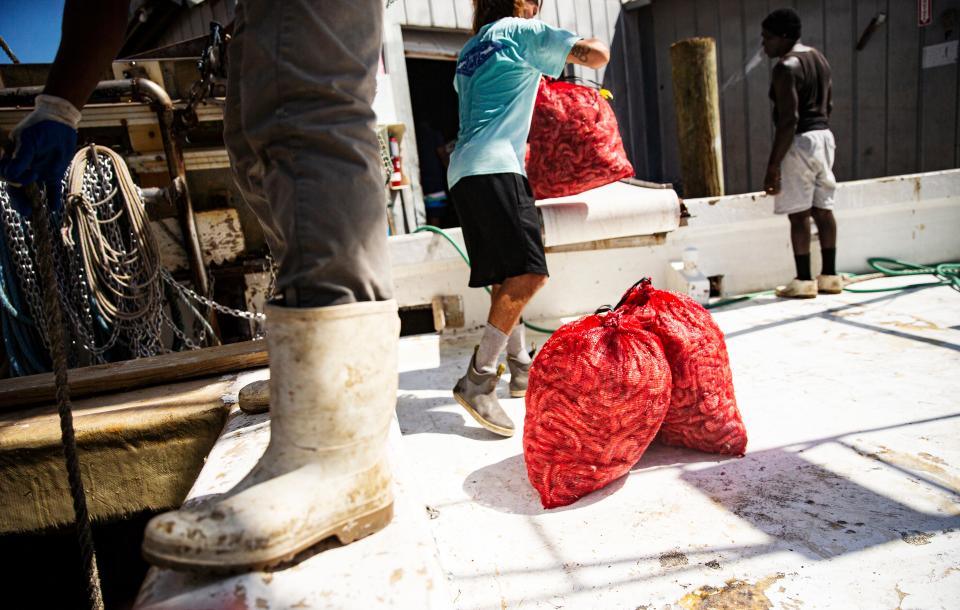
One economist estimated the 345 commercial fishing jobs in Lee County make roughly $5.7 million a year, with 145 processing and wholesaling jobs accounting for another $8 million a year.
“A lot of those fishermen live in the area,” said University of Florida-Gainesville assistant professor and marine economist Andrew Ropicki. “They pay rent, mortgages –– they’re part of the economy that wouldn’t be there if you didn’t have a shrimping industry.”
Unlike cold-water shrimp, Gulf shrimp are prolific and short-lived; they are difficult to overfish. The National Oceanic and Atmospheric Administration considers Gulf shrimp an annual crop. According to NOAA’s reports, they have never come close to being overfished, even when trawlers were netting record amounts.
But shrimping in the Gulf is now endangered, thanks to high gasoline prices and low-cost farmed shrimp imported from across the globe from farmers involved in dodgy labor and health practices. Over the last three decades, shrimping has plunged as farmed shrimp have increased in number and decreased in price.
Meanwhile, other factors, such as shrinking working waterfront space have squeezed shrimpers tighter every year.
Gasoline prices skyrocket, shrimp prices bottom out
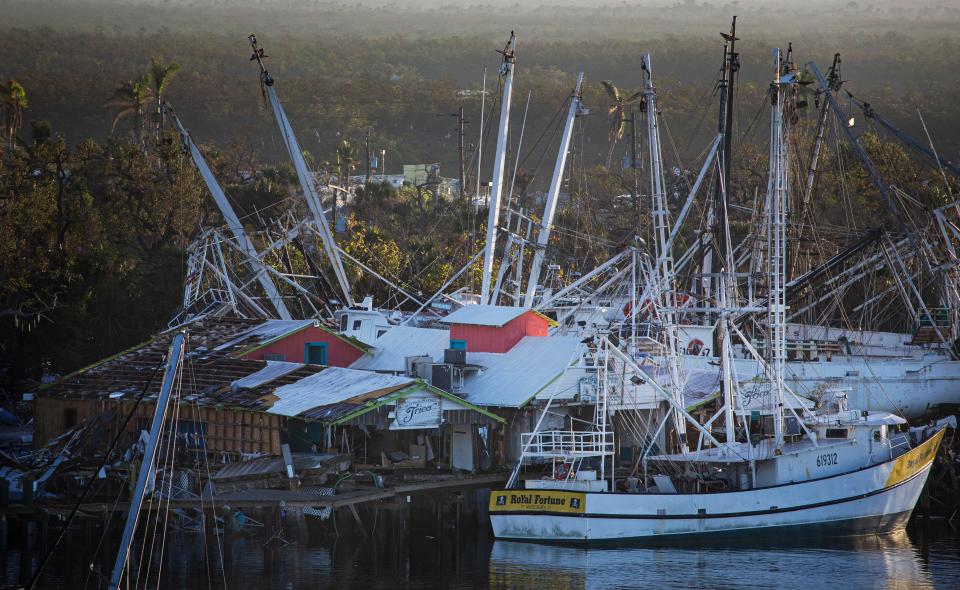
“Hurricane Ian hit the industry hard,” Ropicki said, “but it wasn’t going great to begin with.”
In 2021, the shrimp industry in Florida led seafood production among all categories. Roughly 300,000 pounds of pink, brown, rock and bait shrimp caught amounted to a dockside value of $62 million, per the most recent annual report by the Florida Department of Agriculture and Consumer Services.
And Southwest Florida is vital to Florida’s shrimping industry.
“When you take the value of all shrimp landed by commercial fishermen in Florida, one out of every four dollars is landed in Lee County,” said Ropicki.
But those numbers used to be much, much higher.
Florida saw hundreds of trawlers headquartered in Fort Myers Beach in the 1960s and ‘70s, selling massive boatloads of Gulf pinks. However, it has decreased steadily ever since.
By the ‘90s, the industry could see it was trouble. Before 1995, shrimpers averaged roughly 1,800 landings a year in the state, ranging between 1,100 and 2,500 landings. But the 2000s weren’t kind; landings plummeted to under 500 a year by 2003 –– and they have continued to drop.
This is likely tied to gasoline prices, shrimpers and other industry experts say, and the data seem to bear that out. Shrimping is a gasoline-heavy operation, requiring heavy steel vessels that can spend weeks at a time out on the water, collecting tens of thousands of shrimp at a time in order to be profitable.
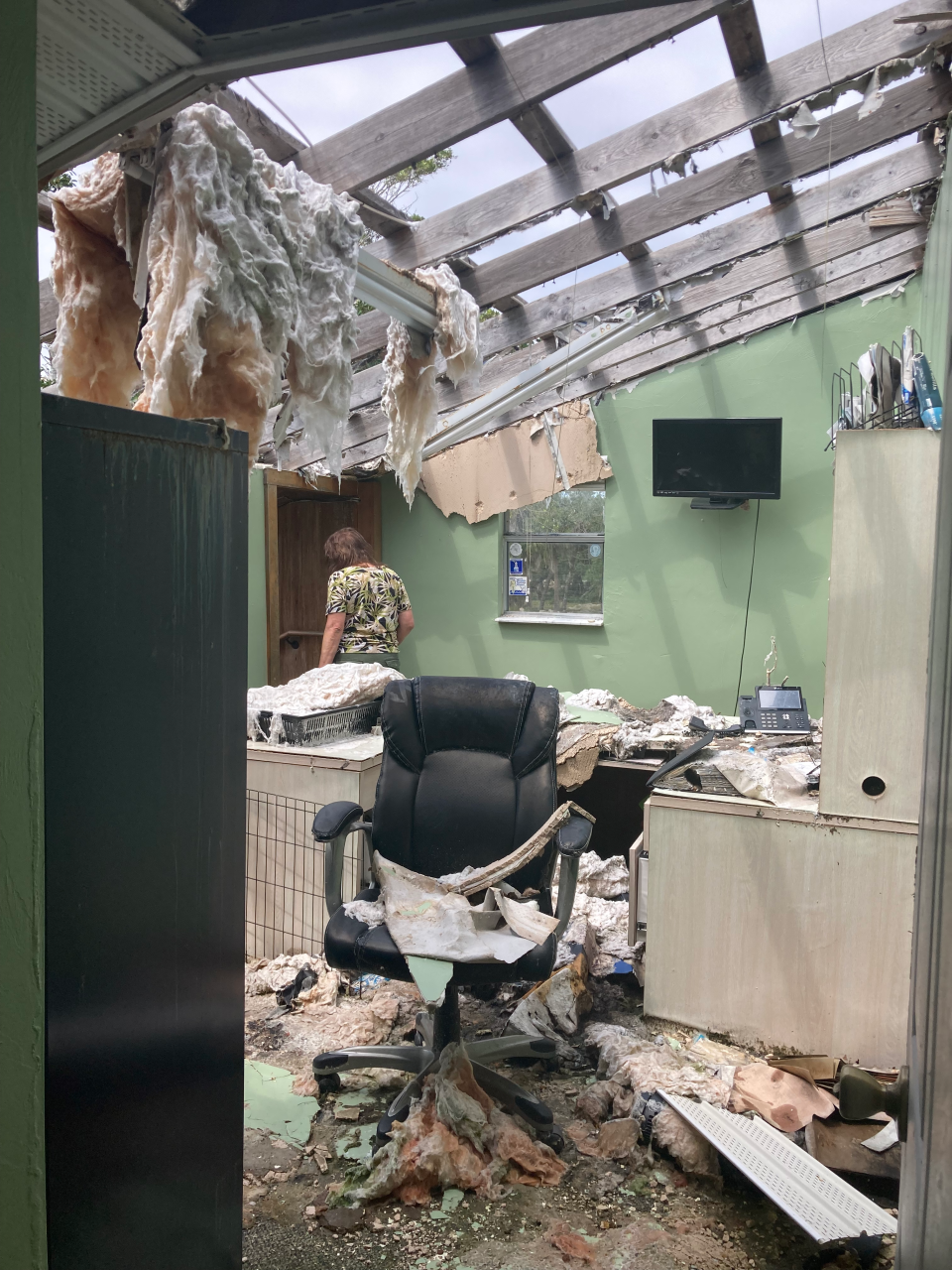
Pre-2000, diesel gasoline prices hovered around a dollar a gallon, per data from the U.S. Energy Information Administration.
However, by 2003, a gallon of diesel cost $1.45. The cost has never decreased. As of May 20, it stands at $3.58 a gallon, and the cost of fueling a trawler for its entire trip is exorbitant.
Erickson estimated he spends $15,000 per boat trip.
Aparicio spends so much on gas, he’s looking into ways to offset that cost. For instance, he said, he’s thinking about having a smaller boat head out periodically to his trawlers to offload shrimp and bring the catch in to a dock in Fort Myers Beach, allowing the trawler to stay out for longer periods of time.
“There’s nobody who’s going to come save us,” Aparicio said. “We have to do it ourselves.”
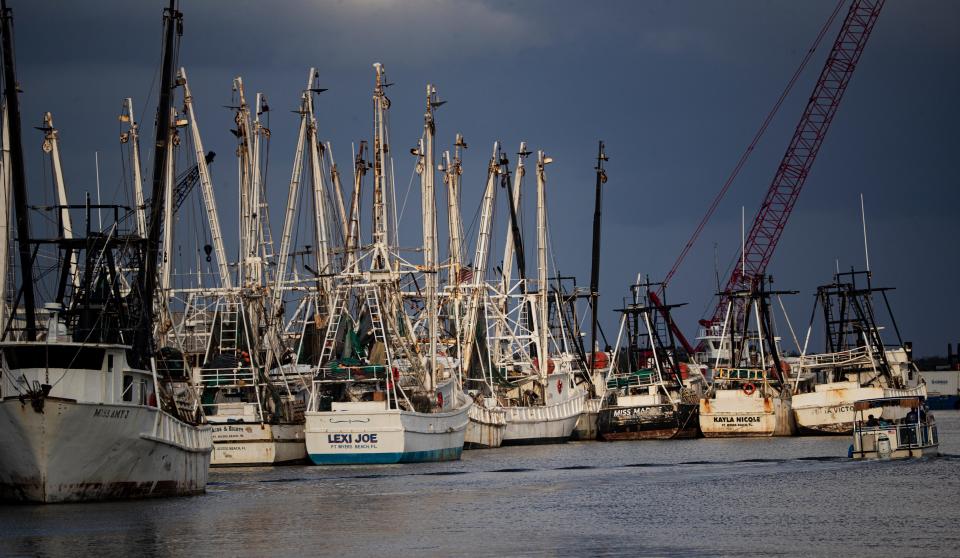
The same year, the international shrimp farming industry began to take off, data analysis from seafood industry organization Global Aquaculture Alliance shows. In 2003, growth more than doubled from the year before. It’s climbed steadily since, particularly in India and Southeast Asia, thanks to investment from international monetary institutes such as the International Monetary Fund, the Asian Development Bank, or the Asian Development Fund.
These farms typically breed white-legged shrimp grow quickly, reproduce several times a year, and have had their cannibalistic traits bred out of them, allowing farmers to cram thousands of them into very small tanks.
Today, Ropicki said, about 90% of shrimp consumed in the U.S. come from these international shrimp farms.
Bottom-barrel imported shrimp prices squeeze U.S. shrimpers
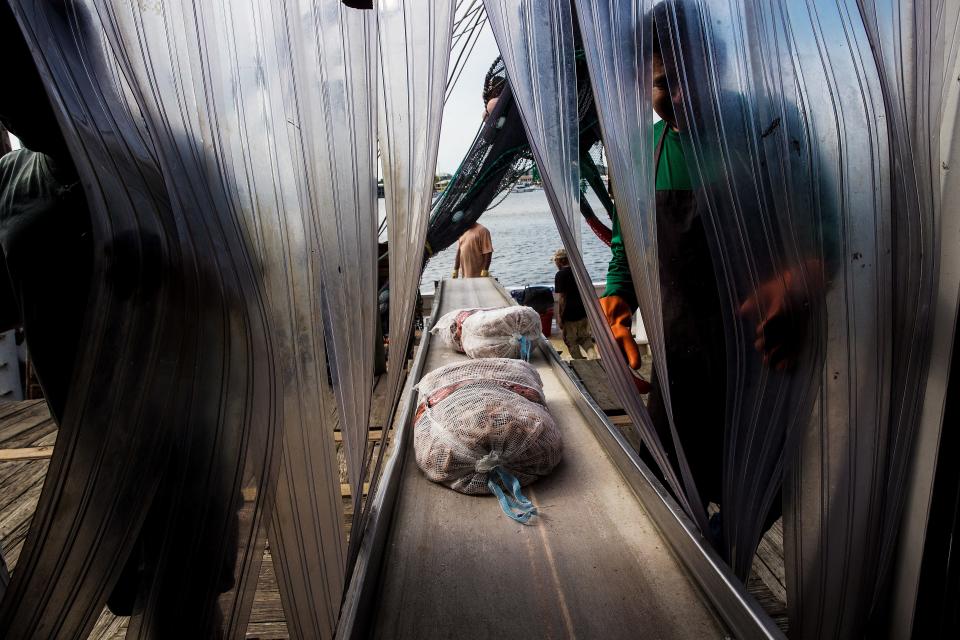
U.S.-based shrimpers and shrimp experts decry the stock imported from Ecuador, Argentina, Thailand, India, and elsewhere, citing rubbery texture, poor taste and potentially harmful veterinary antibiotics that have been banned in the U.S.
A report published in science journal Aquaculture Reports this month found shrimp in out of the most productive white-legged shrimp farming countries all contained traces of banned medications.
U.S. shrimpers are bound by U.S. rules when it comes to treatment and preservation, meaning they cannot use any of the antibiotics found on imported shrimp.
Additionally, a March report out of the Corporate Accountability Lab also found slave and child labor is routinely employed in India and Thailand’s shrimp farms to cut costs.
The low prices of imported shrimp, however, are too good for customers to pass up.
Large pink Gulf shrimp costs a little under $20 a pound, peeled and cleaned for you at Erickson & Jensen’s docks. At Publix, however, a pound of white-legged shrimp can run $10 or less on sale. It’s hard to compete with those prices, Erickson said, which depresses sales.
Shrimp industry experts hope they see some governmental support to salvage their industry and a unique, local food that lure vacationers to Florida.
“These are the best-tasting shrimp in the world,” Erickson said of Gulf shrimp. “There’s hundreds of different species around the world, but the one that we are blessed with here is superior.”
“All those shrimp that are jammed into this country are gonna sell,” he added. “I know that we have a better tasting … and healthier … product, but not everybody is willing to pay the price.”
Picariello suggested that the U.S. implement additional testing of imported shrimp to clamp down on banned antibiotics. This, she said, would have uses twofold: help keep U.S. customers safe and improve prospects for the domestic shrimping industry.
Aparicio agreed something needed to be done to stem the imports flooding the market.
“We don’t have a level playing field,” Aparicio said. “Our government is letting us down.”
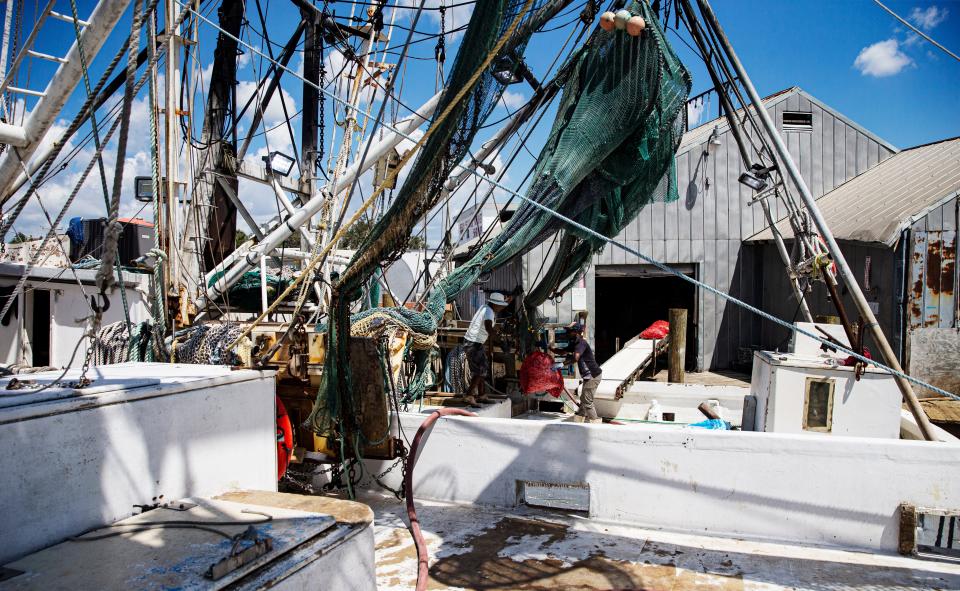
Some legislators are sympathetic to the industry. U.S. Rep. Troy Nehls (R-TX) recently introduced the “Save our Shrimpers Act” that Southwest Florida’s Rep. Byron Donalds (R-FL) co-sponsored. The bill demands international monetary institutions the U.S. pays taxpayer money into cease financing shrimp farming, processing or exporting from foreign countries.
“The impact of Hurricane Ian on our local seafood industry was devastating,” Donalds said in a statement. “As our community rebuilds, shrimpers must also deal with a market that is oversaturated with U.S. taxpayer-financed foreign product.”
The “Save our Shrimpers Act” was introduced in early April, and is currently awaiting a vote.
Waterfront real estate, crew members at a premium
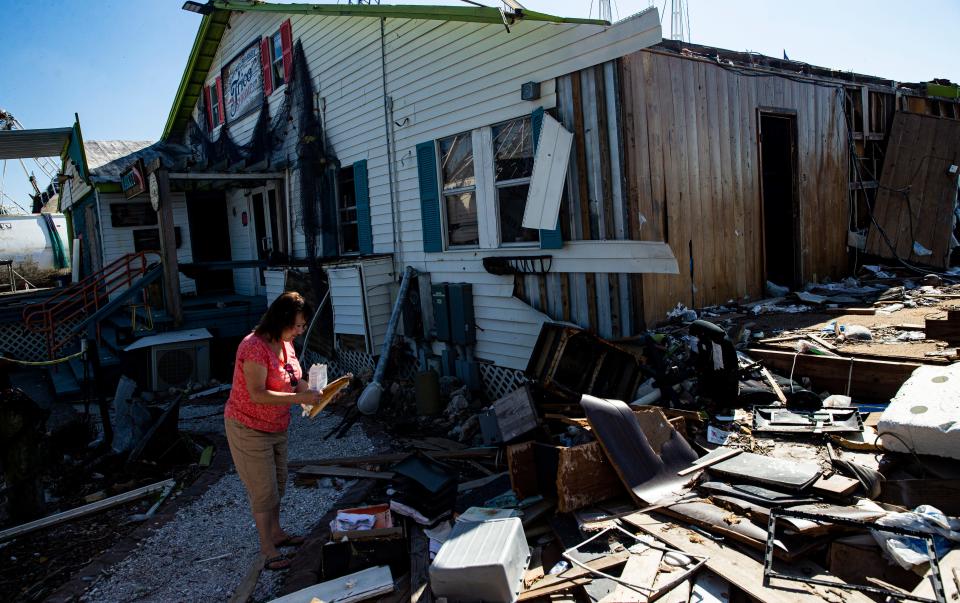
Other factors have hobbled trawlers as well, though.
Aparicio noted as valuable waterfront property was bought up and turned into condos, less working waterfront property meant fewer processing facilities. That meant processors could charge shrimpers higher prices, he said, since they had nowhere else to choose from.
“Right here in Florida, it’s hard to find a place to tie up a big shrimp boat,” Aparicio said.
According to historian and environmental education nonprofit Ostego Bay Environmental, Inc. founder, Joanne Semmer, the county originally purchased the land with a grant intended to keep the area as a docking spot for commercial fishermen.
A December 13, 1989 News-Press article by staff writer Sharon Kennedy notes that county staff recommended the property be used exclusively for shrimp docks and recreation.
A legal notice Semmer provided that was published in The News-Press on April 15, 1992 requested proposals by companies interested in the lease promises. It notes the “premises shall only be used for shrimp packing.”
But that no longer is the case.
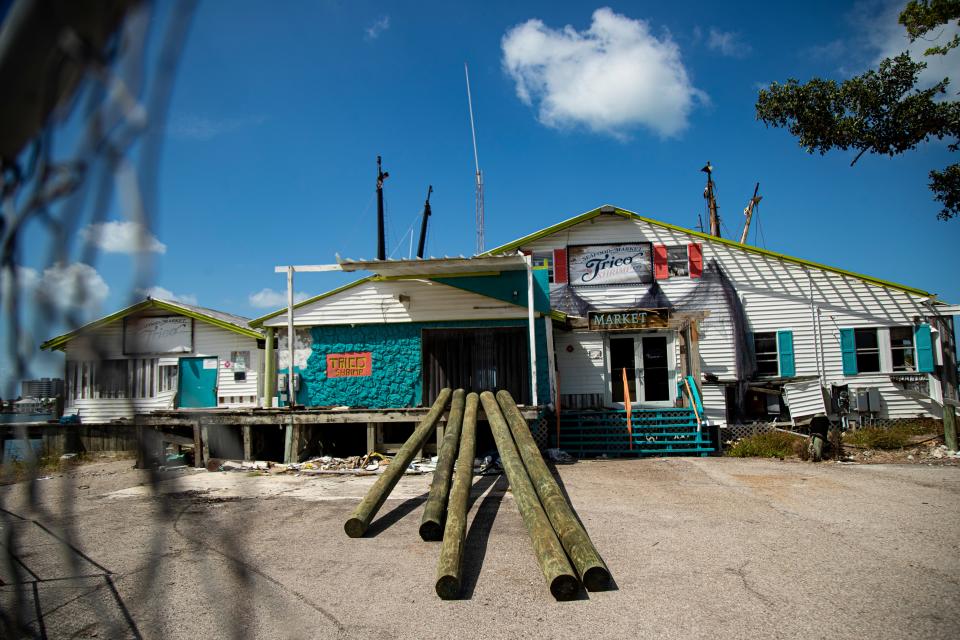
Lee County Commissioners Cecil Pendergrass and Ray Sandelli, the latter of whom in whose district Fort Myers Beach falls, did not respond to repeated request for comment.
Semmer said she hopes they will make an effort to preserve commercial shrimping access to the dock. Without it, she said, the area would lose touch with its history and an important way of life.
“We’ve got to keep this working waterfront,” Semmer said. “Otherwise, the whole character of the at the community changes.”
The board did direct staff in that April meeting to facilitate a potential lease restructuring proposal between the county and a Trico successor that allows for limited commercial marine usage of the property.
They also committed to communicating plans for restoration of the San Carlos Maritime Park as they develop.
‘You come to Florida, you want to eat some fresh seafood’
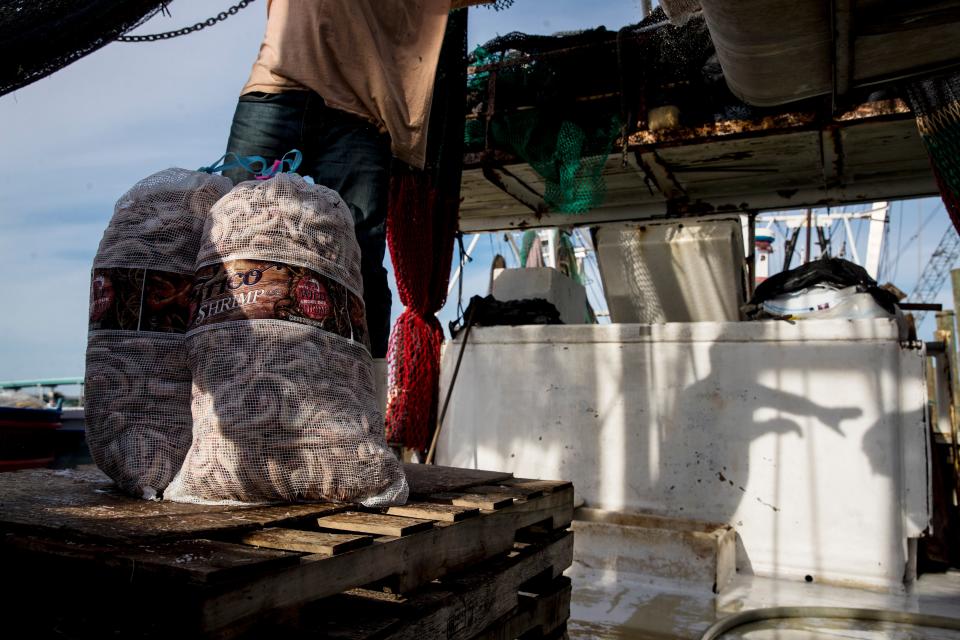
These days, shrimpers say, there’s fewer people willing and able to properly crew a trawler. Today, Erickson only has five or six boats heading out on fishing trips; he owns nearly twice that.
Trawlers go out for roughly 30 days at a time, and fish by night. The crew, which on a typical boat runs 3 or 4, takes home a percentage of the profits as pay, incentivizing them to catch as many as possible.
An average trip for one of Erickson’s trawlers brings in $40,000, with 30-35% going to the crew. One trip might net 80,000 pounds of pink gold. But the sale price of shrimp being what it is, Erickson said, the amount a crew member gets paid is often not sufficient to entice people onto the water for that long.
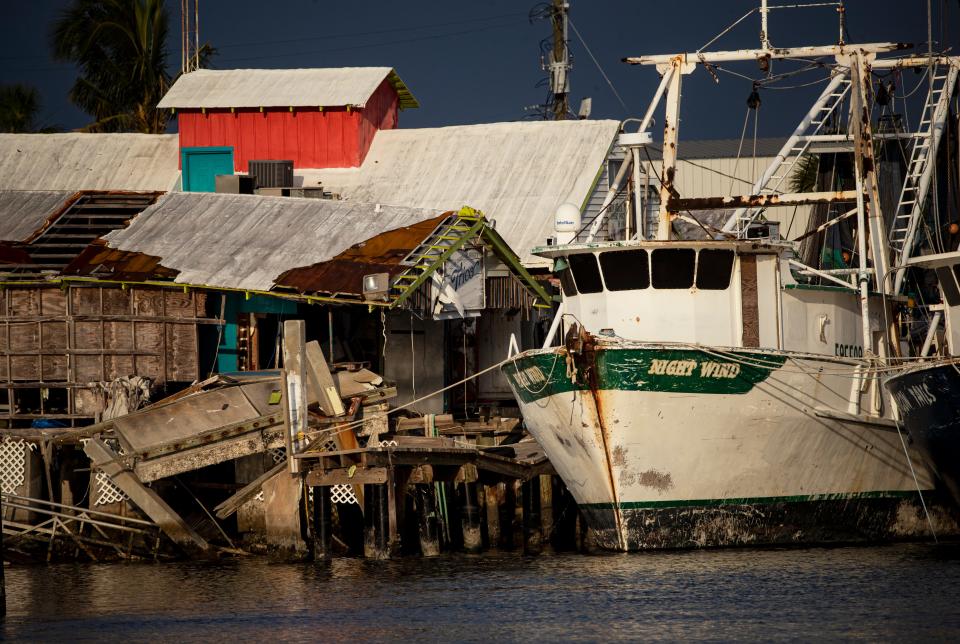
“If there’s more of it, more people would get involved,” he said.
“It’s putting more and more pressure on us,” Aparicio said. “I understand free market and I’m good with that, but every once in a while, you gotta think –– you come to Florida, you want to eat some fresh seafood. And that’s valuable too.”
Meanwhile, Gala and her husband have opened a seafood market –– Big Daddy’s Seafood Market –– down the road and around the corner from where Trico sat for so many years.
But every once in a while, she drives over to the old building and dock to check on them. Her gaze lingers on “Save our Shrimpers” sign, hung there by her former business partner, still a glossy white and blue. On the file cabinets full of years of records, on the bags of garbage sitting in the entryway.
How does it make her feel?
Sick.
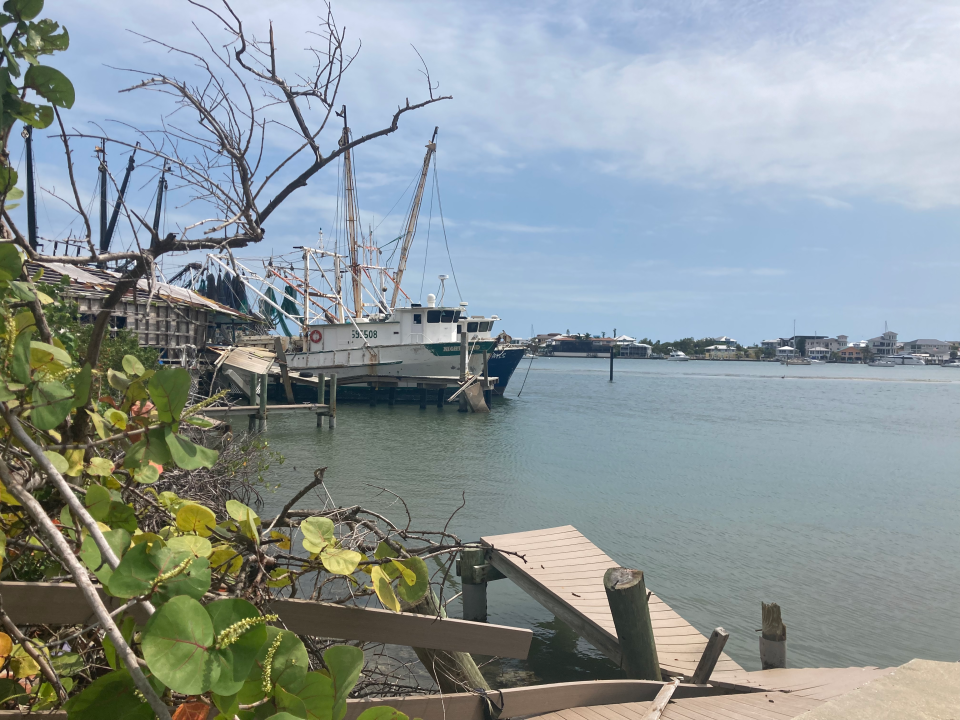
Kate Cimini is the Florida Investigative Reporter for the USA TODAY-Network Florida, based at The News-Press and The Naples Daily News. Contact her at 239-207-9369 or kcimini@news-press.com.
This article originally appeared on Fort Myers News-Press: Florida’s seafood industry is at risk. One fishing dock may change it
Signup bonus from




